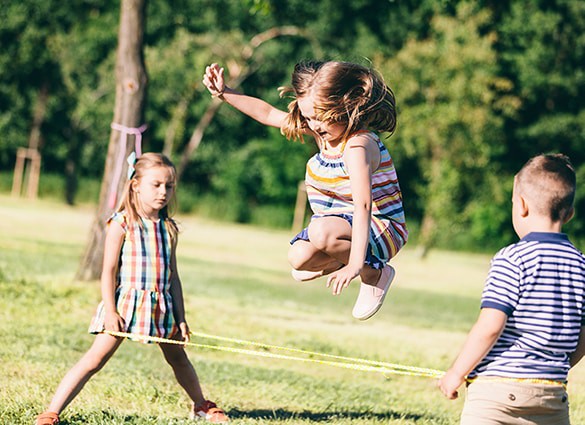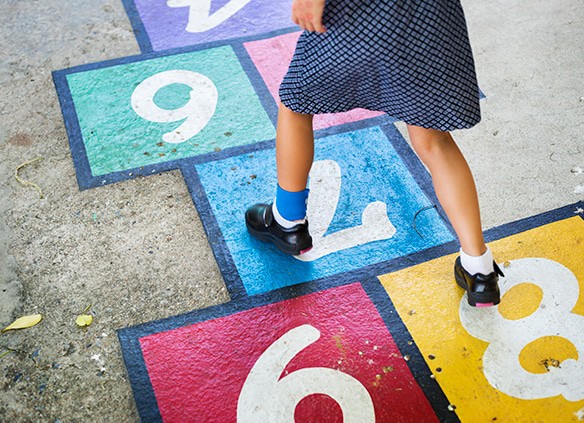Important motor skill for pre-schoolers
Between the ages of 3-5 years young children are starting to develop their gross motor skills and enjoy a wide variety of games, activities and physical pursuits. Gross motor skills are a specific set of skills that involve different body parts such as feet, legs, trunk, arms and hands. These skills are important because they are the ‘building blocks ‘ or foundation movements for more complex and specialized skills required by children to competently and confidently play different games, sports and activities at school.
Hopping is an important key for acquiring many fundamental motor skills. Jumping rope, playing hopscotch, skipping, galloping – all these classic childhood activities hinge on a single accomplishment: hopping on one foot. Hopping requires the ability to balance on one leg and then generate enough force in the stance leg to hop, clear the ground and land without putting the other leg down or falling over. It is a good indicator of being able to maintain balance while moving, commonly referred to as ‘dynamic balance’.


Development Guide
Most children will reach this milestone any time between the ages of 2-4 years, but only after first mastering jumping up and down on both feet. As a general developmental guide, young children will progressively develop the ability to hop in this order:
- 3 year olds – learning to hop on their preferred leg;
- 4 year olds – can hop on a preferred leg 4-6 times and are starting to hop on their non-preferred leg;
- 5 year olds – can hop on either leg and can hop forwards on a line.
Some young children who display difficulties with the development of gross motor skills like jumping or hopping may have contributing factors including low muscle tone, abnormal foot posture, joint hypermobility, poor balance or coordination or dyspraxia.
If my child can’t hop, how can I help?
If your pre-school aged child is having difficulty with jumping or hopping skills, you can try some simple activities to help them develop this important motor skill:
- Make sure your child has mastered jumping up and down, landing on two feet, before trying to teach them to hop;
- You can ask your child to jump from 2 feet and land on one foot, while holding their hand;
- Start with small hops on the spot with you holding their hand or while they are holding the back of a chair;
- You can then increase the number of hops, and then increase the distance between hops, as your child becomes more competent.
- Ensure your child uses both legs for hopping. Initially, they may be better on their preferred leg but it is important to encourage them to develop skills on both legs.
- Play is the natural mode for children to learn new skills. Hopscotch is an ideal game to help develop jumping, hopping, leaping and balance skills.
If your child is about to start primary school (prep) and is having difficulties with jumping, hopping, galloping or skipping activities, it is an ideal time to have a paediatric podiatry assessment. We assess children for potential contributing factors like joint hypermobility, abnormal foot posture, low muscle tone and any strength or flexibility issues.


